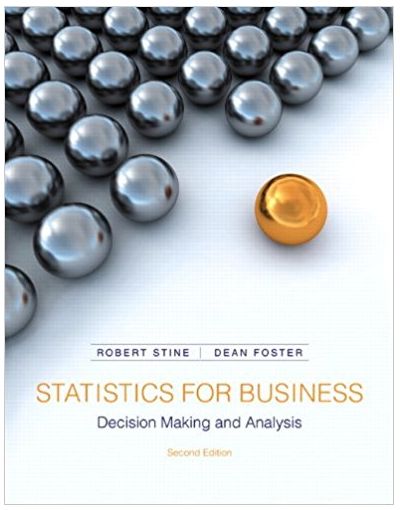An airline developed a regression model to predict revenue from fights that connect feeder cities to its
Question:
Estimated Revenue = 87 + 0.3 Distance + 1.5 Population
with R2 = 0.74 and se = 32.7.
(a) The airline plans to expand its operations to add an additional feeder city. One possible city has population 100,000 and is 250 miles from the hub. A second possible city has population 75,000 and is 200 miles from the hub. Which would you recommend if the airline wants to increase total revenue?
(b) What is the interpretation of the intercept in this equation?
(c) What is the interpretation of the partial slope for Distance?
(d) What is the interpretation of the partial slope for Population?
Fantastic news! We've Found the answer you've been seeking!
Step by Step Answer:
Related Book For 

Statistics For Business Decision Making And Analysis
ISBN: 9780321890269
2nd Edition
Authors: Robert Stine, Dean Foster
Question Posted:





